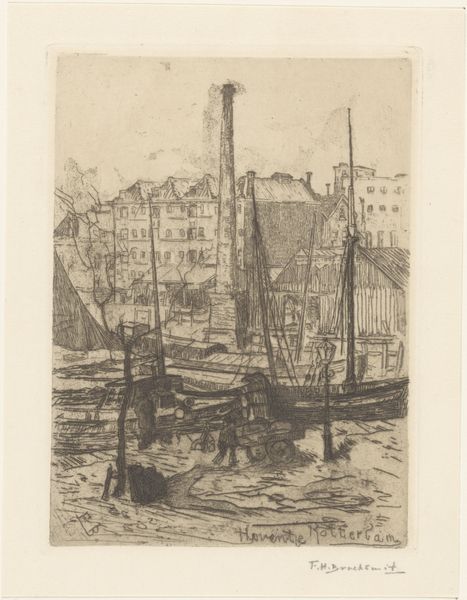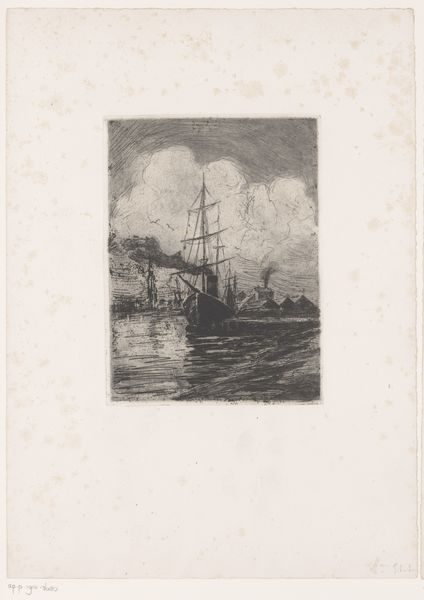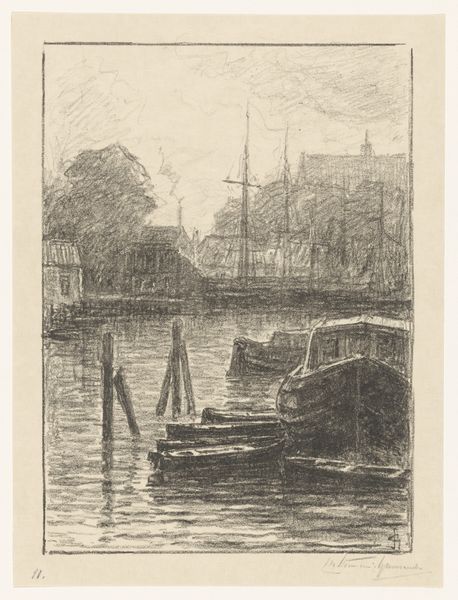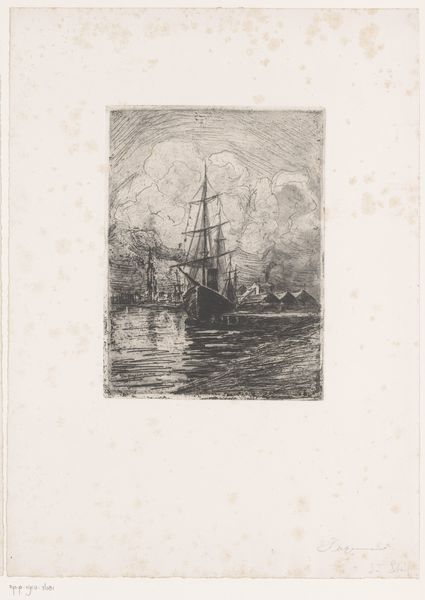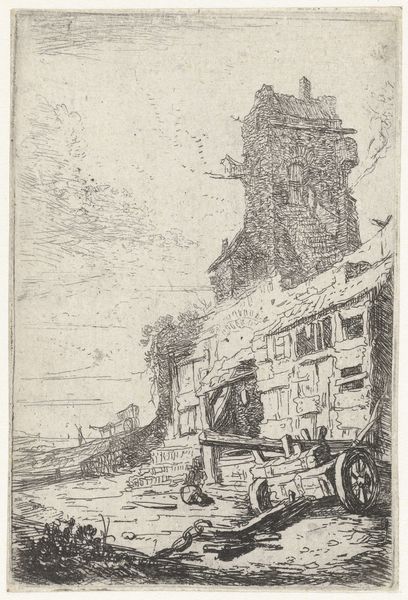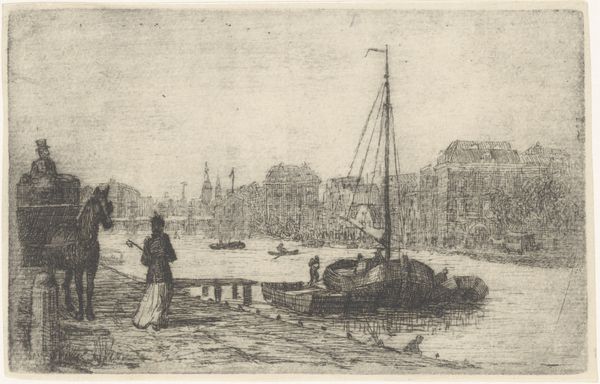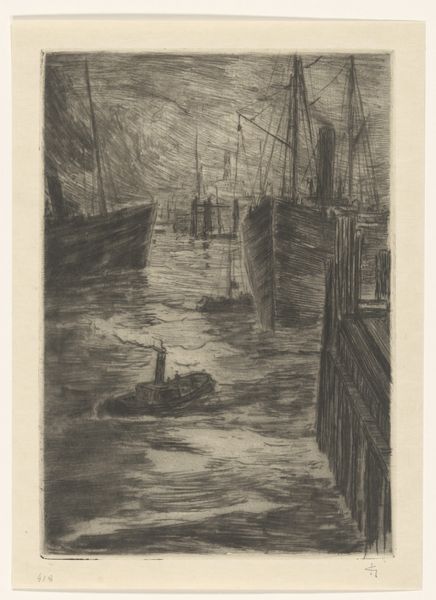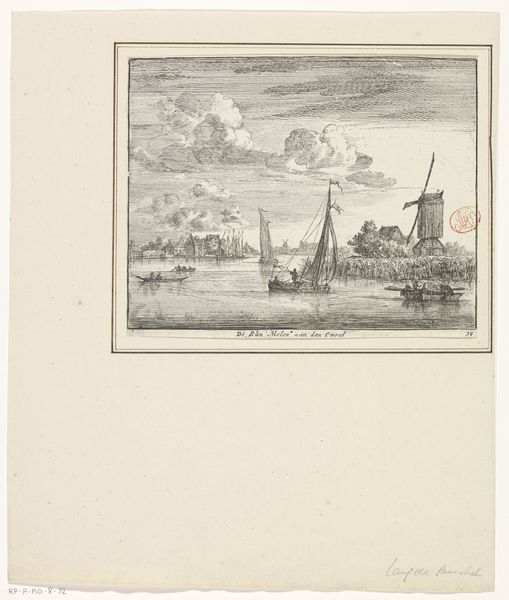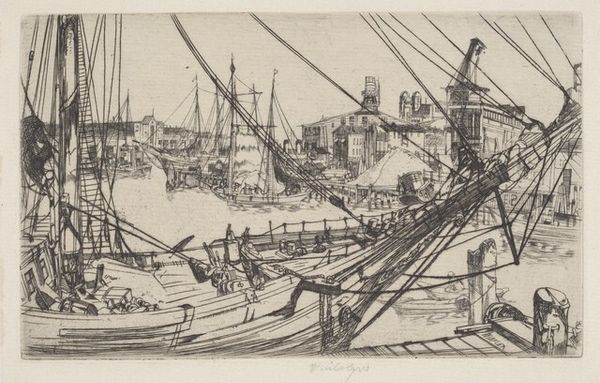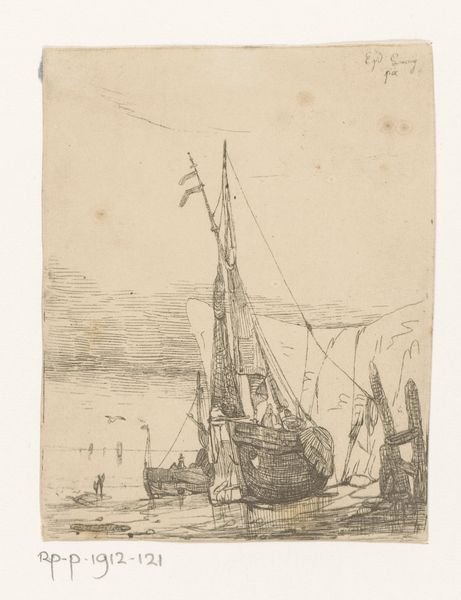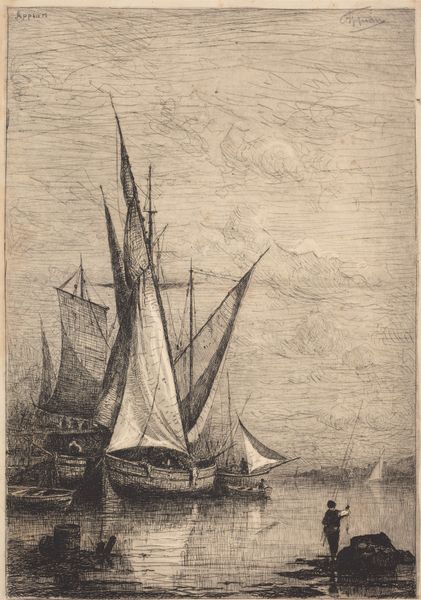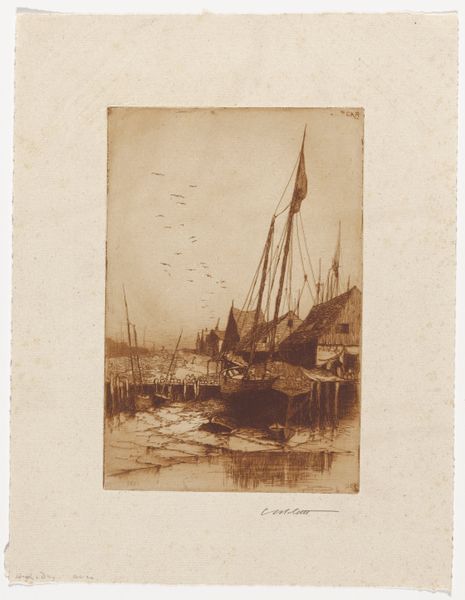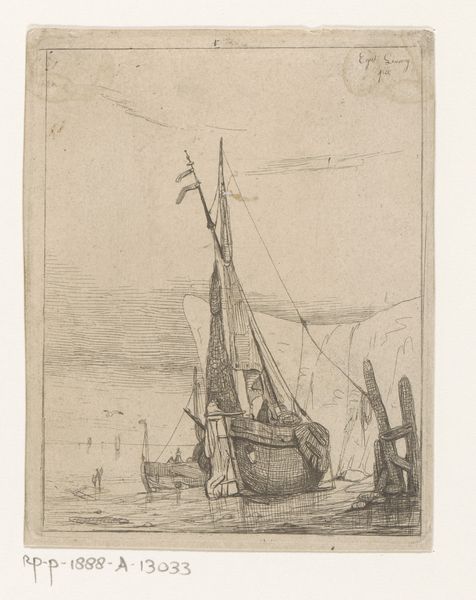
drawing, print, etching
#
drawing
#
baroque
# print
#
etching
#
landscape
#
etching
#
figuration
#
line
#
cityscape
Dimensions: 11 1/2 x 5 9/16 in. (29.2 x 14.2 cm)
Copyright: Public Domain
Curator: Looking at "Framed Port scene with two figures", created sometime between 1610 and 1678, I'm struck by its quiet simplicity. Editor: It feels desolate, almost mournful. The light is grey and somber, the lines delicate but heavy with a sort of unspoken story. The textures appear rough hewn in the way they are produced by the artist. Curator: Indeed. Notice how the artist utilizes etching to craft this framed scene. The formal composition is fascinating; the interplay of vertical lines—the tower, the ship masts—against the billowing, rounded forms of the clouds. There's a careful balance. We have foreground interest with figures near the water's edge that act as entry point into the cityscape. The architecture is subtly geometric that really underscores Baroque classicism. Editor: As you said, the etching technique itself adds layers. It wasn't simply about rendering an image; it was labor-intensive, involving acid, metal plates, and skilled craftsmanship. Look at the ways in which different materials could create varying qualities in the final printed image. It represents the toil of its making; the final object embodying its material process. Were these created to adorn the home? A signifier of status? The print’s accessibility would bring art to new audiences, but under what economic conditions were they being produced and sold? Curator: Interesting thought. What resonates is its exploration of depth and space, the delicate lines allowing an emotional charge that speaks beyond the presented cityscape. It exemplifies formal structure within Baroque landscape traditions and the dynamic interplay it brings. The line's elegance speaks directly to the spirit's sensibility. Editor: Right, and how it democratized image production! Instead of relying on single painting commissions from the wealthy elite, this print became replicable in industrial output which transformed labor processes for artisans. The artwork's story resides within material conditions rather than pure representation or symbol. Curator: That perspective grants further context; emphasizing both art and cultural conditions, how different aspects interact through process to reveal broader historical moments captured through this method. Editor: Absolutely! The piece goes beyond aesthetics; It reveals a whole web surrounding art’s origins and life cycle—materials shaped by cultural forces within labor. Curator: A superb encapsulation! Editor: It gives a depth beyond first glance.
Comments
No comments
Be the first to comment and join the conversation on the ultimate creative platform.
